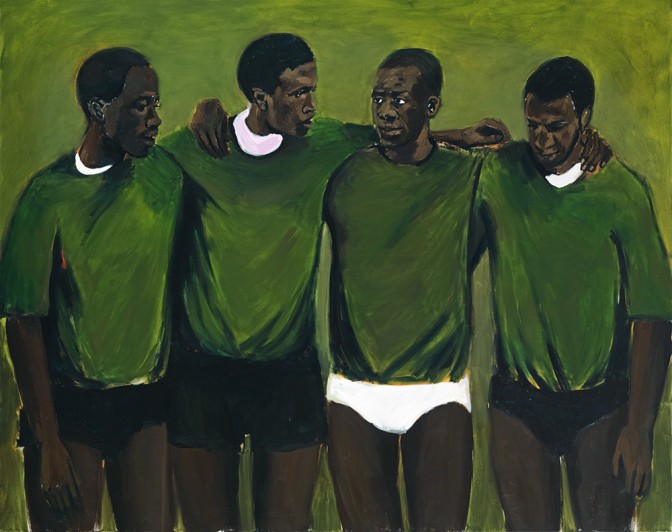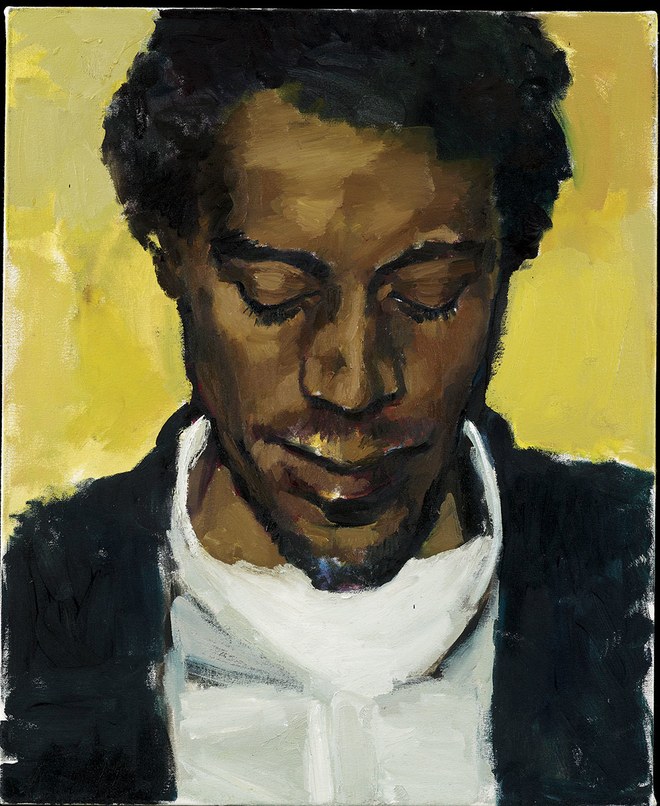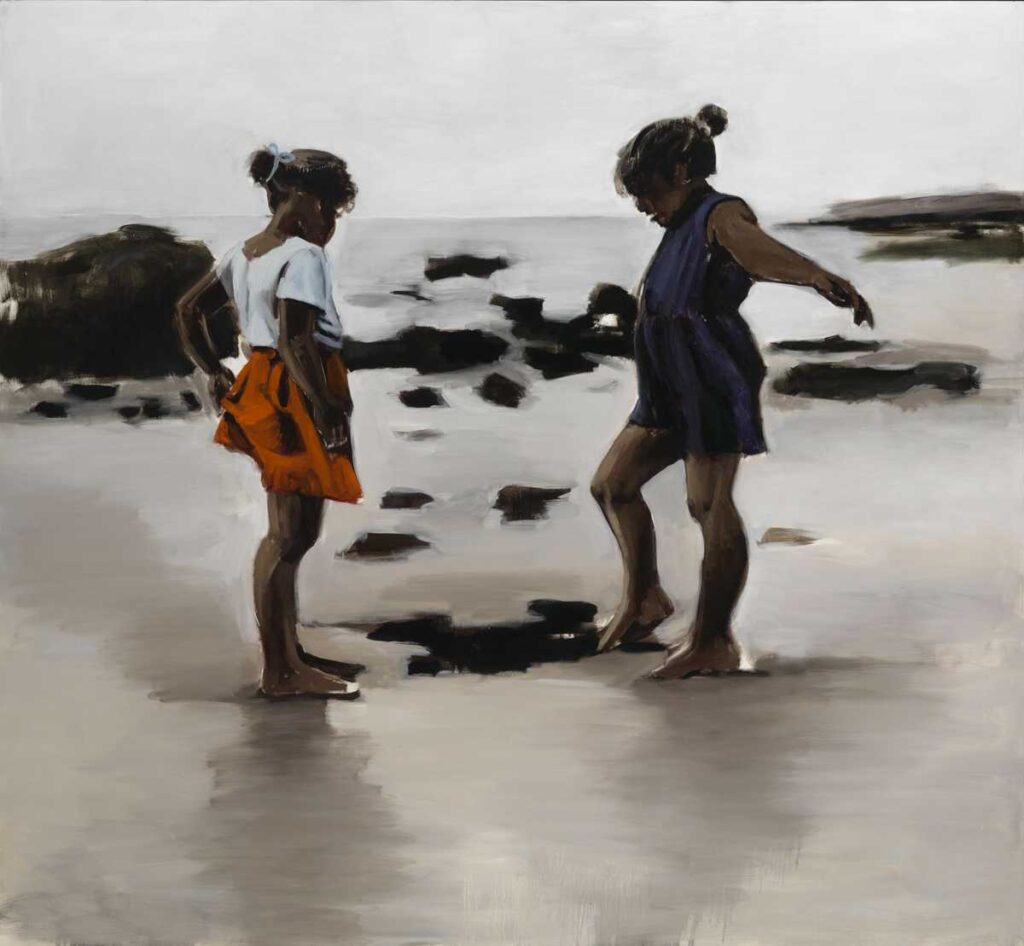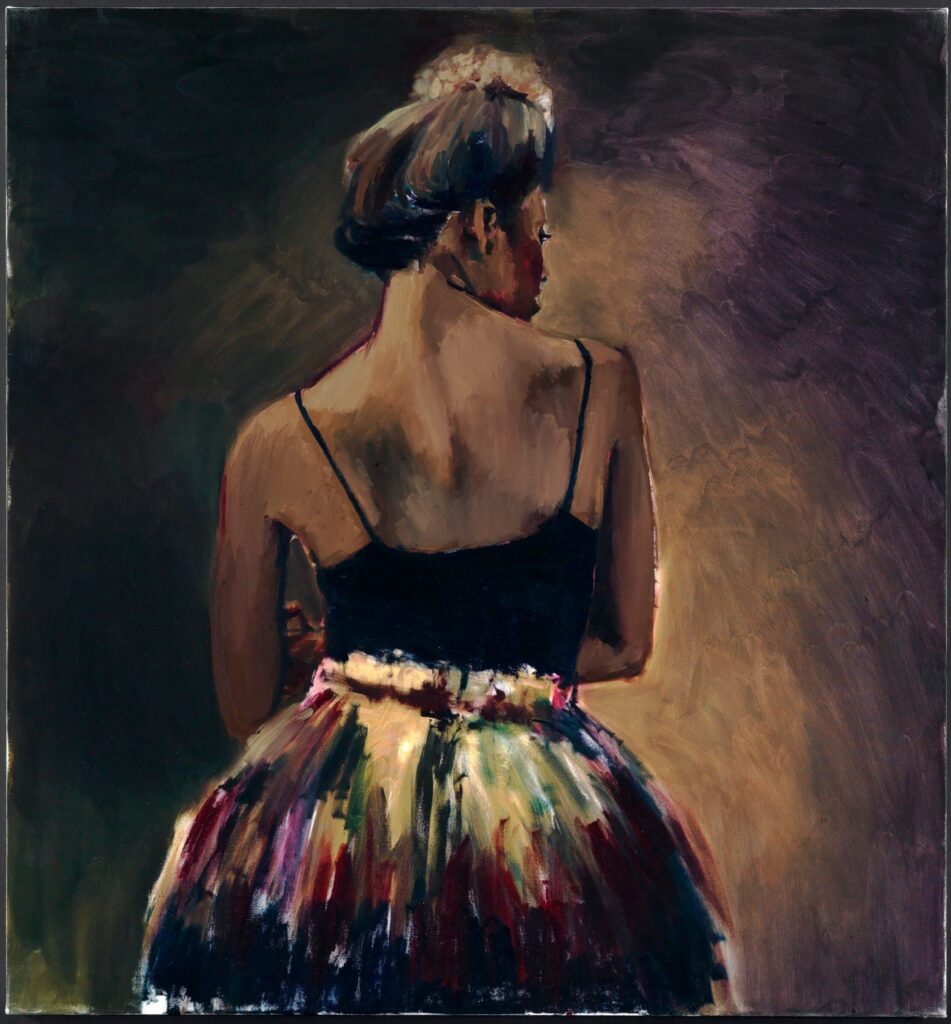The Frank Stella You Thought You Knew
You may know Frank Stella from the brightly colored, shaped canvas paintings in his Protractor series from the late 1960s to early 1970s. However,...
Marva Becker 11 July 2024
20 February 2024 min Read
In the realm of contemporary art, few voices resonate with the depth and intrigue found in the paintings of Lynette Yiadom-Boakye. With a masterful blend of fiction and realism, Yiadom-Boakye’s portraits captivate viewers, inviting them into a world where imagination reigns supreme.
Painting stands as one of the most ancient and evocative forms of art. Among its various genres, portraits possess a unique ability to arouse our curiosity and capture our gaze, as if granting us a glimpse into the lives of individuals we may never encounter in person. When confronted with a portrait, one may feel as though they are peering into the depths of the subject’s soul, forging an almost personal connection with them.
It is precisely the stark contrast between this shared experience and the reality behind Lynette Yiadom-Boakye’s work that renders her paintings both fascinating and enigmatic.
In recent years the British-Ghanaian artist has emerged as a distinctive voice in the contemporary art scene, and she is nowadays recognized as a pivotal figure in redefining the representation of Black figures in painting.
Almost abstract when investigated up close, her portraits showcase perfectly pictured figures, floating in empty spaces, engaging in animated conversation, or performing mundane activities. Yet, when closely investigated, we realize her work is purely fictional and all her figures are nothing but imaginative characters. Working at the same time with layering and simplification, her art constitutes a unique fusion of hyperrealistic elements and invented scenarios, inviting viewers to either lose themselves or find a peculiar sense of familiarity within her creations.

Lynette Yiadom-Boakye, Complication, 2013, Corvi-Mora, London, and Jack Shainman Gallery, New York City, NY, USA. The New York Times.
Born in 1977 in London to Ghanaian parents, Yiadom-Boakye was a self-proclaimed “boring child,” with good grades in school and on a path to becoming an optician. However, her vivid imagination persisted and, after taking an art foundations course during her senior year in high school, she decided to redirect her studies towards art.
To do so, she attended Central St. Martins College of Art and Design in 1996-1997, before transferring to Falmouth College of Art, where she received her undergraduate degree in 2000. She later enrolled at the Royal Academy Schools, receiving her MA degree in 2003.
It was during her time at the Falmouth College of Art that Yiadom-Boakye discovered her true voice. While there, she realized her focus was more on the act of painting itself, rather than on the subject, prompting a simplification in her artistic approach. Rather than constructing complicated narratives around her works, she reconnected with her inner child– imaginative and visionary– and decided to approach painting from a different perspective.

Lynette Yiadom-Boakye Citrine by the Ounce, 2014, Doreen Chambers & Philippe Monrougié. Tate Museum.
In her investigation of painting, Lynette Yiadom-Boakye approached portraiture, focusing primarily on black figures. Without embedding her approach with overt political undertones, the artist revolved around black figures primarily because of closeness. Drawing from memory, sketches, and found images, Yiadom-Boakye naturally revolved towards the figures she was more familiar with. In doing so, the artist created a universe populated by common people, portrayed while engaging in normal activities like talking, playing, or just staring at us.
Despite the sense of familiarity they evoke, Yiadom-Boakye’s paintings transcend worldly connections, leaving her subjects adrift in an undefined realm. Deliberately withholding information about the identities and backgrounds of her subjects, the artist’s work allows for a multiplicity of interpretations. This intentional ambiguity challenges viewers to confront their preconceived notions and biases, prompting a reevaluation of the assumptions often associated with portraiture. In doing so, the artist disrupts conventional narratives and presents an alternative perspective on representation in art.

Lynette Yiadom-Boakye, Condor and the Mole, 2011, Arts Council Collection, London, UK. Tate Museum.
In Yiadom-Boakye’s universe, inhabited by seemingly ordinary individuals, time holds no sway. The absence of contextual cues–such as shoes, consumer goods, fashion, or any other element that could reflect a specific point in time–compels viewers to construct their own narratives, thereby immersing themselves in the artist’s creative process and assuming an active role in interpreting her world.
The ambiguity of her work, nonetheless, derives from her subjects just as much as from her technique. Working primarily with oil on canvas, the artist employs a dark palette, with muted earthy colors and only occasional bursts of vibrant hues. This approach adds to the mystery of her portraits, leaving her figures in an undefined space, a blurred backdrop that gives away no clue or reference. In this no man’s land, viewers are not solely asked for an interpretation, but they can find their own place, immersing themselves in this fictional universe.

Lynette Yiadom-Boakye, Switcher, 2013. Fondazione Sandretto Re Rebaudengo.
As a British-Ghanaian artist, Yiadom-Boakye’s work can easily be read as a reflection of her diasporic experience and the complexities of identity. Nonetheless, by creating characters who exist outside the bounds of time and place, the artist transcends specific cultural contexts, offering a universal exploration of the human condition. Her paintings become a space for contemplation on the broader themes of existence, mortality, and the enduring power of art to transcend cultural boundaries. At the same time, her approach to the figures, especially in relation to African and African diasporic subjects, pushes the boundaries of portraiture, inviting audiences to embark on a journey of introspection and reflection within the realm of her captivating and enigmatic creations.
Both universal and deeply personal, her figures speak to each one of us–past, present, and future human beings–and her art has the rare power to connect across cultures and time, speaking a universal language that transcends boundaries and restrictions. It is a testament to the enduring power of traditional techniques when wielded by a masterful hand with a contemporary vision. Her ability to infuse her paintings with a sense of mystery and ambiguity challenges viewers to question established norms of representation and narrative in art, engaging them in a shared experience and a long-lasting dialogue around fundamental themes of humanity.
DailyArt Magazine needs your support. Every contribution, however big or small, is very valuable for our future. Thanks to it, we will be able to sustain and grow the Magazine. Thank you for your help!